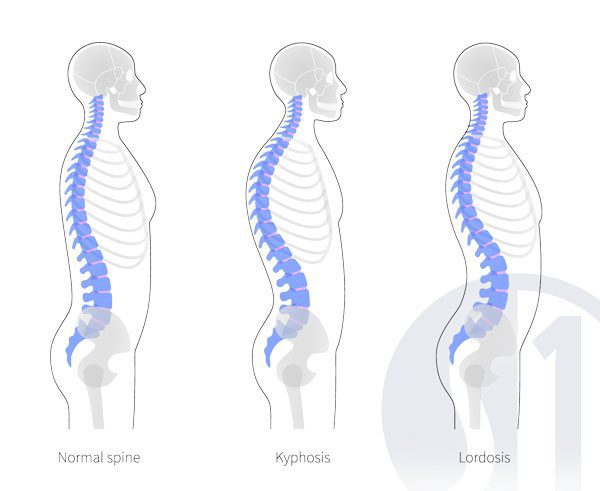Kyphosis
Spinal Disorder Characterized by Forward Flexing of the Back
Kyphosis, the excessive forward flexing of the upper back related to aging, poor posture or congenital conditions, is characterized by an abnormally rounded upper back. The vertebrae bones collapse and the spine curves forward. This can occur at any age, but is common during adolescence.
This condition is the counterpart to Lordosis (also known as swayback), which an abnormal curve above the buttocks, causing the abdomen to protrude and buttocks to stick out. The difference between the two conditions depends on the direction of sway in the spine, although treatments for the two are similar.
In severe cases this condition can be painful, cause significant spinal deformity, and lead to breathing problems. Patients with severe kyphosis may need medical help to help reduce the excessive spinal curve and improve their symptoms.
SpineOne doctors treat this condition with a combination of physical therapy and minimally-invasive therapies to help relieve debilitating pain from the condition and gradually correct imbalances in the muscles that support the spine. These procedures are assisted by advanced medical imaging to ensure accurate and effective treatment. Many patients who follow this treatment plan report improvements in their pain levels and quality of life.
Effective Kyphosis Treatments. Same Day Appointments.
Kyphosis Symptoms
Kyphosis Treatment
This conditionis a deformity of the spine. With it, your vertebrae change from a cylindrical shape to a wedge shape. Your spine may begin to curve forward. Eventually, this gives your upper back a rounded appearance.
